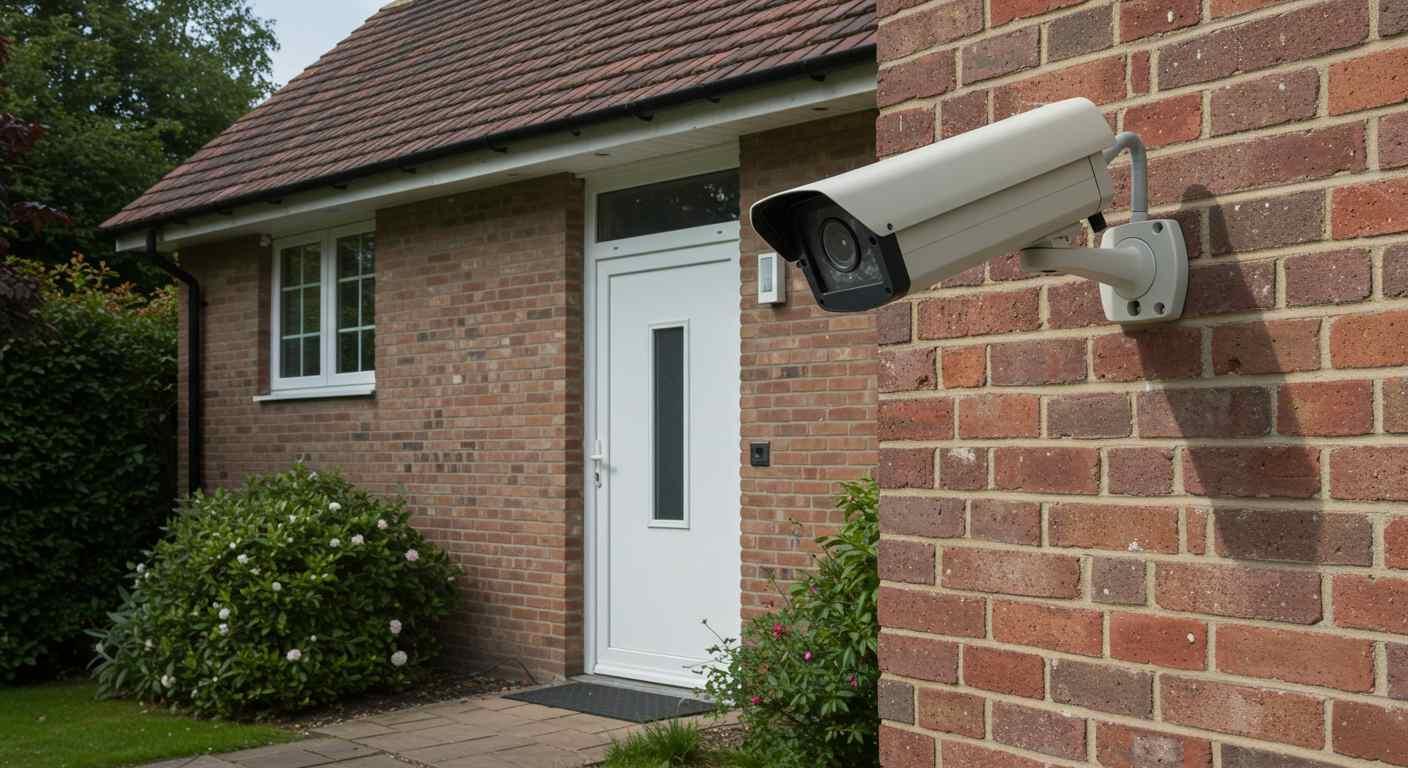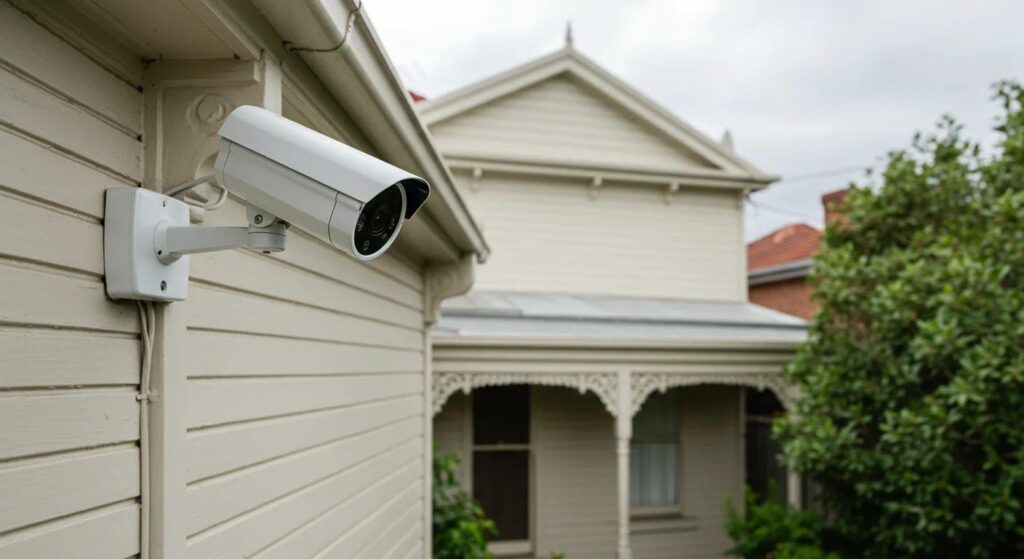You can buy the best CCTV system on the market, but if the cameras are pointed the wrong way, you’re still exposed.
We’ve seen it too often: footage that misses the intruder by five degrees, blind spots near side gates, or cameras placed so high they only film the sky. It’s frustrating, and it defeats the entire point of having a security system in the first place.
Good placement gives you clarity, coverage, and peace of mind. It lets your system do what it was meant to: protect what matters. And the good news? With the right strategy, you can get it right the first time.
At I&B Electrical, we help Melbourne homeowners, developers, and businesses plan layouts that actually work. No guesswork. No wasted gear. Just smart, secure placement.
Before You Install: Know What Each Area Really Needs
Every zone in your property plays a different role, and it deserves a different camera setup. But don’t worry, you don’t need to learn the ins and outs of every model. What matters more is knowing what to prioritise in each area.
Outdoor zones need durability, visibility, and wide coverage. Think rainproof cameras, strong mounts, and angles that avoid direct sunlight, especially when planning the electrical installation to ensure long-term reliability.
Here’s the general rule:
- Outdoor zones need durability, visibility, and wide coverage. Think rainproof cameras, strong mounts, and angles that avoid direct sunlight.
- Indoor zones call for subtlety and context. A discreet dome cam in the living room makes more sense than a bulky outdoor unit indoors.
- Transitional zones like garages or hallways need motion detection and reliable recording, since people tend to move through them quickly.
Also, think ahead. Will this area be renovated later? Will trees grow into view? Can it reach power or your Wi-Fi? Minor oversights now often lead to expensive rewiring or system failures later.
We help clients across Victoria plan these things before a single cable is laid. That way, your investment delivers absolute protection, not just a false sense.
Outdoor Placement: 4 Zones You Can’t Skip
1. Main Entry (Front Door)
Most break-ins start at the front door. Yep, even when there’s a camera in plain sight. That’s because it’s often aimed too high, wide, or close to the light source.
Smart placement tips:
- Mount the camera at 1.5 to 1.7 metres, angled slightly downward for facial clarity.
- Avoid pointing it directly at porch lights or the sun. Glare = useless footage.
- Use weatherproof models rated IP66 or higher to survive Melbourne’s changing weather.
Want to get even smarter? Add a doorbell cam for live interaction and layered coverage. We install both, depending on your entry layout.
2. Secondary Access Points (Side, Back Doors & Windows)
These are the real hotspots. Less visible, more shaded, and often, where people forget to install anything.
What to do:
- Use corner mounting to catch both the entry and the approach path.
- For back windows, dual angles help: one on the door, one scanning the wall or yard.
- Install cameras low enough for clarity but high enough to avoid tampering, about 2.3 to 2.7 metres is the sweet spot.
In many Victorian homes, these areas sit close to side fences or narrow walkways. That’s where we custom-fit compact bullet or dome cameras that don’t attract attention but record everything you need.
3. Driveways & Garages
Your car, tools, and delivery packages sit in this zone, sometimes unattended for hours.
What works best:
- Mount above the garage door, angled to cover the whole driveway.
- Choose cameras with infrared or low-light features for solid night footage.
- Go for a wide view to catch both movement and license plates.
Bonus: If your garage connects to the house, a motion-activated feed lets you track who’s coming in and out, day or night.
4. Perimeter & Fence Line
This is your outer wall of defence. It’s not where the break-in happens, it’s where it begins.
Placement tips:
- Mount cameras inward-facing, along key points of the fence or yard perimeter.
- Avoid filming beyond your property. It keeps you within privacy laws and focused on your space.
- Use brackets that suit brick, render, or timber; we adapt these depending on your exterior surface.
Waterproof housing is essential here. Summer storms and dusty winds? No problem. We install systems that keep rolling no matter the season.

Indoor Placement: Watch What Matters
1. Common Areas (Living Rooms, Kitchens, Entryways)
These are your high-traffic zones. People gather here, valuables sit out, and it’s often where strangers pass through, whether it’s guests, cleaners, or tenants.
Placement tips:
- Use discreet dome cameras in ceiling corners. They blend in and give full-room coverage.
- Opt for motion-triggered alerts to stay informed without watching hours of footage.
- Prioritise models with HD resolution; you want precise detail without pixelated guesswork.
If you have kids, pets, or elderly family members, these cameras also help you monitor movement patterns without being invasive.
2. Hallways & Staircases
Think of these as chokepoints. No matter where someone goes in the house, they’ll probably pass through one of these areas.
Smart approach:
- Install a camera at the end of the hallway or above stair landings, facing down the length.
- Use tilting or adjustable brackets for tricky angles and stair bends.
- One camera can usually cover an entire hallway; no need to go overboard.
This is especially useful if you live in a double-storey home with multiple bedrooms connected via one corridor.
3. Rooms with Valuables
Home office with gear? Walk-in robe with heirlooms? Media room full of tech? These rooms need coverage, but not heavy surveillance.
Best practices:
- Install a compact fixed-focus camera near the ceiling corner, ideally opposite the door.
- Tuck wiring out of sight or use wireless cams if cabling is tricky.
- Consider pairing with motion alerts and timed schedules, on when you’re out, off when you’re in.
We help clients secure these rooms without making them feel like vaults. It’s about balance.
4. Where to Place Your DVR or NVR
This one gets ignored, but it matters. Your DVR or NVR is the system’s brain. Keep it too exposed, and you risk damage or theft. Hide it too well, and you can’t access it when needed.
Placement tips:
- Use a ventilated cupboard, a dedicated utility room, or a high shelf with power access.
- Avoid hot zones (next to ovens) or dusty corners (garage shelves).
- Keep it near your router if using networked cameras, or plan cabling accordingly.
We always plan this, especially for builds or major upgrades. Clean setup = fewer errors, easier maintenance, and better uptime.
Planning Your CCTV Layout Like a Pro
Before your first camera goes up, take 15 minutes to map your space. It’ll save hours of guesswork later and help avoid costly blind spots.
Here’s a simple way to start:
1. Grab a basic floor plan (or sketch one): Mark all entry points, large windows, side gates, and garages. These are your primary coverage zones.
2. Walk your perimeter and interior: Take note of areas with poor lighting, high foot traffic, or hidden corners. These are common blind spots.
3. Think in lines of sight, not just dots on walls: Draw arrows showing where each camera would face. Check for overlaps and gaps.
4. Plan for power and connectivity: Mark where your Wi-Fi router or power points are. For wired systems, shorter cable runs = cleaner setups.
5. Factor in future needs: Will you renovate soon? Add a shed? Upgrade to smart alarms later? Plan for extra camera slots even if you don’t use them immediately.
This rough plan doesn’t need to be perfect, but it gives you a head start. When you’re ready, our team at I&B Electrical can take it from sketch to a fully installed system with zero fuss.
Clever Placement Means You Sleep Better
You don’t need more cameras; you need more intelligent placement. The kind that sees what matters, skips what doesn’t, and doesn’t let blind spots become problems later.
It’s easy to fall into the trap of reactive setups, installing gear after something happens. But with a clear plan, a well-mapped layout, and the right gear in the right places, you take back control before anything goes wrong.
At I&B Electrical, we help you make placement decisions that hold up, not just on day one, but for years to come.
We’ve helped homeowners, builders, and developers across Melbourne install CCTV systems that do their job. Not halfway. Not patchy. Done right, from the start.

